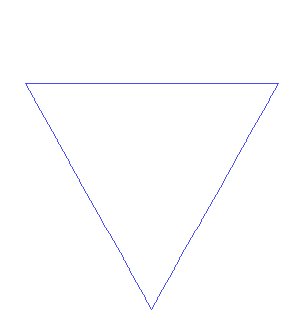The Sierpinski triangle is a fractal described by Sierpiński in 1915 and appearing in Italian art from the 13th century. It is also called the Sierpiński gasket. The Sierpinski triangle is a geometric pattern formed by connecting the midpoints of the sides of a triangle. It is at the is most interesting one and simplest one in fractals.
The Sierpinski triangle is given by Pascal's triangle (mod 2), giving the sequence 1; 1, 1; 1, 0, 1; 1, 1, 1, 1; 1, 0, 0, 0, 1; ... . In other words, coloring all odd numbers black and even numbers white in Pascal's triangle produces a Sierpiński triangle
Construction
An algorithm for obtaining arbitrarily close approximations to the Sierpinski triangle is as follows:




